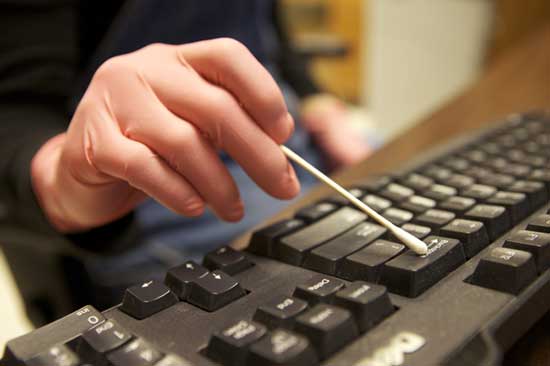Hand Bacteria Left On Surfaces Could be Forensic Tool

CSIs may one day be able to use more than DNA and fingerprints to catch criminals, as a new study finds that the bacteria that live on our hands are just as unique to each of us as our DNA. And traces of this "personal" DNA left behind on the surfaces we touch can be matched to the person who left it.
The human body — inside and out — plays host to billions of bacteria and other microbes; there are more bacteria in the human body than there are human body cells.
Previous research by Noah Fierer of the University of Colorado at Boulder and his colleagues had found that a typical human hand carries about 150 bacterial species and that only about 13 percent of the bacterial species found on any one hand are shared between two people.
"The obvious question then was whether we could identify objects that have been touched by particular individuals," Fierer said.
Fierer and his team set out to test this idea by trying to match the bacteria found on people's palms and fingers with those left behind on their respective computer keyboards and mouses.
In their first test, the team swabbed bacterial DNA from individual keys on three personal computer keyboards and matched them up to bacteria on the fingertips of the computer owners. They also compared the computer swabs to the bacteria DNA swabbed from people who had never touched the keyboards. The results: Bacteria from the computer owners matched much more closely to the bacteria on the keyboards than that from the strangers.
For the second test, the team swabbed nine computer mouses that hadn't been touched in more than 12 hours and compared the swabs with those taken from the palms of the computer owners. They compared the similarity of these two samples with 270 random samples from palms that had never touched the mouses. Again, the computer owner swabs matched much more closely to what was found on each computer mouse than did the random samples.
Sign up for the Live Science daily newsletter now
Get the world’s most fascinating discoveries delivered straight to your inbox.
In a third test, the team also found that bacterial colonies swabbed from a person's skin and left at room temperature persisted for two weeks, pointing to the potential usefulness of "personal" bacteria as a forensic tool.
"Each one of us leaves a unique trail of bugs behind as we travel through our daily lives," Fierer said. "While this project is still in its preliminary stages, it could provide a way for forensics experts to independently confirm the accuracy of DNA and fingerprint analyses."
The new technique, described in the March 15 issue of the journal Proceedings of the National Academy of Sciences, could particularly prove useful as it is often difficult to obtain sufficient human DNA for forensic identification without the presence of blood, semen or saliva on an object. Bacterial DNA could also be useful in cases where clear fingerprints can't be lifted, though more research is needed to figure out how well skin bacteria sticks to different types of surfaces.
The technique could even be useful for distinguishing between identical twins, who share the same DNA, but still have different bacterial communities on their hands.
And criminals beware: Washing your hands won't get you off the hook. Fierer's previous work has shown that bacterial communities on the hand rebound within hours after hand washing.

Andrea Thompson is an associate editor at Scientific American, where she covers sustainability, energy and the environment. Prior to that, she was a senior writer covering climate science at Climate Central and a reporter and editor at Live Science, where she primarily covered Earth science and the environment. She holds a graduate degree in science health and environmental reporting from New York University, as well as a bachelor of science and and masters of science in atmospheric chemistry from the Georgia Institute of Technology.









